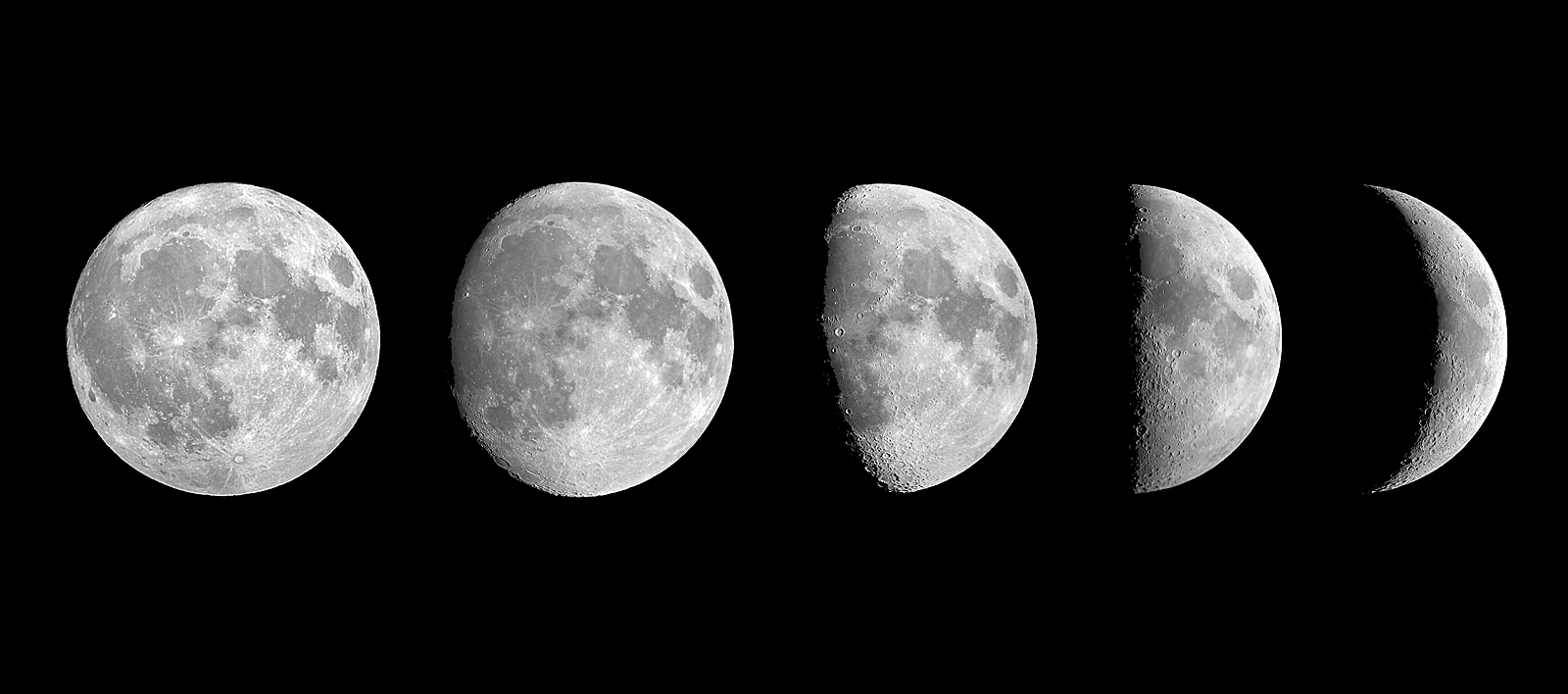images by Agapios Elia, Larnaka, Cyprus.
Agapios took these images over a period of a year. I like them because they capture the pleasure and anticipation of an evening’s first look at the Moon with a low power eyepiece. I always start with a view of the entire Moon and notice which features are well placed for higher power study. When the Moon is three of four days old (right image), I see that Atlas & Hercules, Fracastorius and Janssen are near the terminator. At nearly first quarter (2nd image from right) the Valentine Dome might be glimpsed, as well as Lamont and the threesome of Theophilus, Catharina and Cyrillus - and I always forget which is next to Theo. Over the next few nights some of the grandest spectacles of the Moon emerge - Plato, Copernicus, Ptolemaeus and Tycho. And at Full, I always scan the limb for good librations (checking for Orientale, which is a rare and pleasant surprise when seen), check the pits in Plato (most easily seen now), the dark spots in Alphonsus, and radial bands in Aristarchus. Its lovely to have a friend in the sky, always looking slighly different and at the same time comfortingly familiar. This series stops at Full, which is fine, because I rarely get up in the middle of the night to observe phases past full!
Technical Details:
Telescope: C8-NGT. Cameras: Kodak CX7525/Z730. Processing with Photoshop CS2.
COMMENTS?
Click on this icon File:PostIcon.jpg at the upper right to post a comment.




